How to Install Tile on a Bathroom Floor
New floor tile is a relatively inexpensive way to add instant beauty and value to your home.
INTRODUCTION
An updated bathroom can add instant beauty and value to your home. A new floor tile is a relatively inexpensive way to get started and this DIY project can be completed over a weekend.
STEP 1
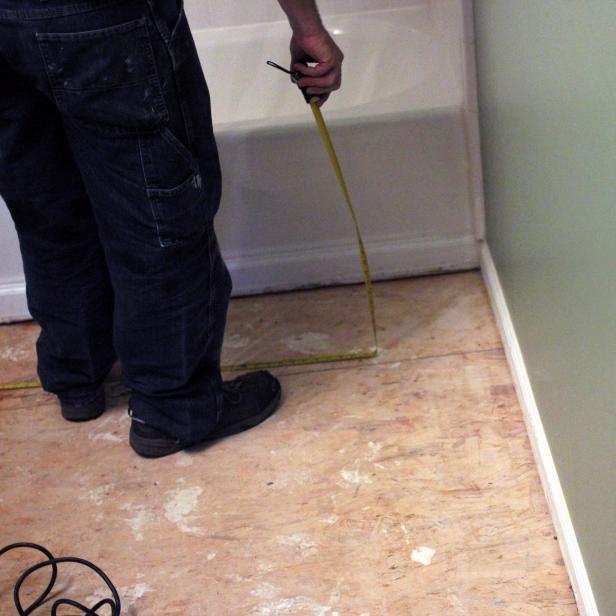
Measure Floor
Use a tape measure to determine how much tile, mortar, grout and backingboard will be needed. Purchasing the right amount of tile at the beginning of the job reduces the risk of mismatches in texture or color between production lots.
STEP 2

Prepare Underlayment
Attaching an underlayment of cement board to sub-flooring provides a level and sturdy surface to which bathroom tile can be easily attached. Using a circular saw, cut panels to fit measured bathroom and use a jigsaw to cut holes as needed to accommodate the toilet and other bathroom fixtures.
STEP 3
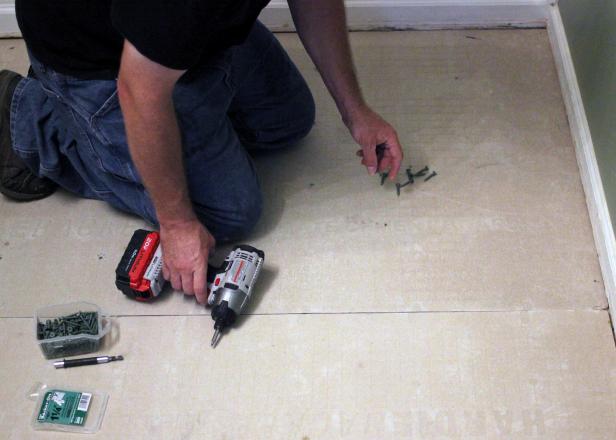
Attach Underlayment
Use a drill with driver bit to attach backerboard screws to underlayment to sub-floor. Space screws approximately 6 inches apart and make sure they rest flat once secured.
STEP 4

Determine Tile Layout
If using a contrasting trim, lay edge tile first. Then lay tile in a configuration that will use the most whole tiles and best fits the space. Use tile spacers to make sure tiles are square and evenly spaced. Position tiles to minimize visibility of tiles that must be cut to size. Once the best layout has been determined, measure tiles that must be cut to complete coverage.
STEP 5

Cut Tile
Use a tile saw to cut tiles necessary to complete floor.
STEP 6
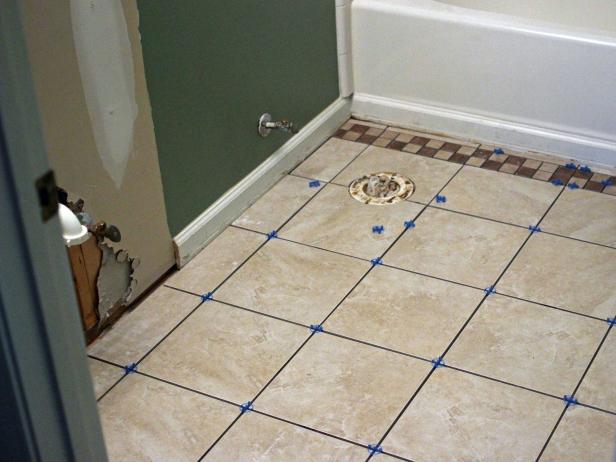
Place Cut Tiles
Place cut tiles to complete tile layout and confirm tiles are spaced evenly, are spare and that the layout is pleasing to the eye. Once satisfied with the layout, remove tile to apply thinset mortar.
STEP 7
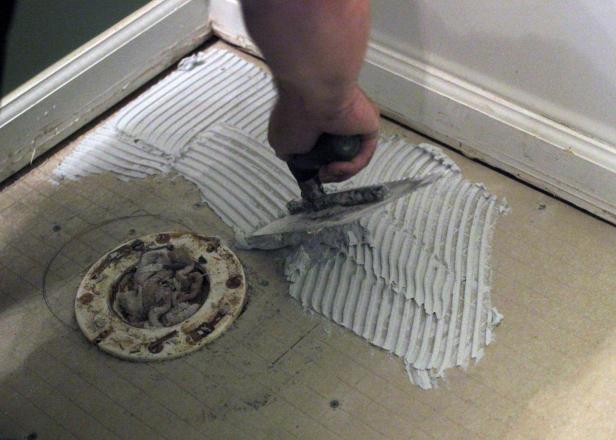
Apply Thinset Mortar
Apply a thin layer of thinset mortar to floor in small sections using a notched trowel. Replace tiles a few at a time, once again using spacers to help hold position.
STEP 8
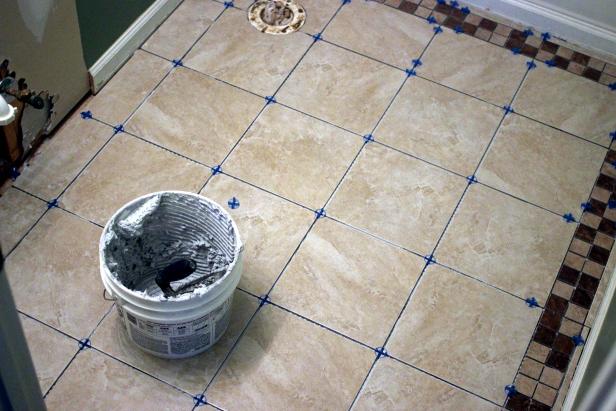
Allow Mortar to Dry
Once tiles are all in place, allow mortar to dry for 24 hours before continuing.
STEP 9

Apply Grout
Once mortar is dry, remove spacers, mix grout and use a grout float to completely fill spaces between tiles.
STEP 10
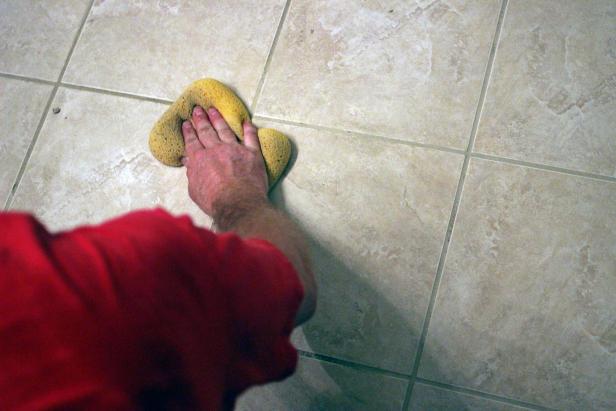
Wipe Away Excess Grout
Once grout has been completely applied, use a damp sponge to wipe away excess grout, leaving tiles clean and grout smooth and level. Make sure to be thorough. Grout left behind on tile results in “grout haze”, which can be difficult to remove once grout has set. Grout will be ready to walk on within 24 hours, although may take several weeks to fully cure.
STEP 11
Apply Grout Sealer
Once grout is dry, finish your weekend tiling project by applying a grout sealer to reduce staining and protect grout.